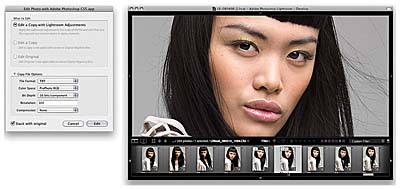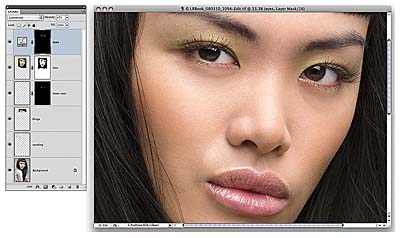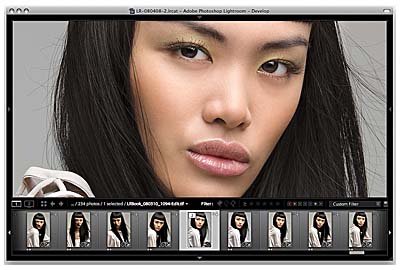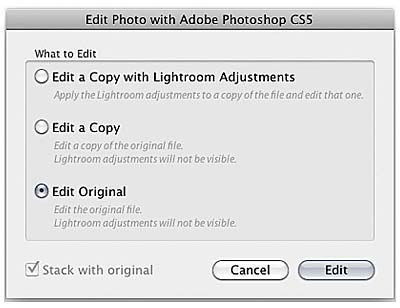Opening and Editing Images in Photoshop
I have so far covered the image processing that can be done directly in Lightroom using the Develop module controls. Remember, all Lightroom edits are non-destructive. The master photos are managed by the Lightroom catalog and the master images are always preserved in their original state. If you want to edit an already rendered pixel image outside of Lightroom in an image editing program such as Photoshop you can choose to edit the original or edit a new copy version. If you want to edit a raw image in Photoshop, then Lightroom must first generate a new, rendered pixel image version for you to work with.
The Edit in Photoshop options
Before you do anything else, you’ll first need to go to the Lightroom preferences and configure the External Editing preferences (Figure 7.1). The External Editing settings allow you to establish the file format, color space, bit depth, and where applicable, the compression settings that are used whenever you ask Lightroom to open a catalog image in an external pixel editing program. There are essentially two ways you can externally edit a Lightroom catalog image.
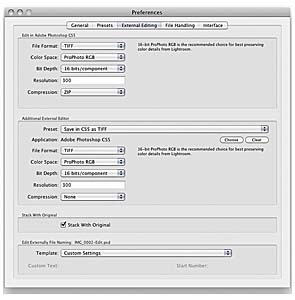
Figure 7.1 To see the external editing application, choose Preferences from the Lightroom menu (Mac) or Edit menu (PC) and go to the Additional External Editor section. Here you can choose the File Format, Color Space, Bit Depth, and Resolution options you want to use when creating an edit version of a master image in either Photoshop or an additional external editing program.
Edit in Adobe Photoshop
The main Edit in Adobe Photoshop command can be found in the Photo  Edit in menu (
Edit in menu ( [Mac] or
[Mac] or  [PC]). This lets you open raw photos from the Lightroom catalog directly into whatever is the most current version of Photoshop, without adding an edit copy version of the master to the catalog (the same also applies when you choose one of the extended editing options such as Merge to HDR). If you use this method to open a raw image, it directly renders a pixel version of the master catalog image without showing an interim Edit Photo options dialog. It is important to note here that the External Editing preferences are the only place where you can establish the file format settings for opening images in this way. So with this in mind, you should use the Edit in Adobe Photoshop section (at the top) to establish what those default file editing settings should be when opening a raw image. In Figure 7.1, ProPhoto RGB is selected as the color space, with a bit depth of 16 bits per channel, saving to the TIFF file format using ZIP compression. An opened image will display the same raw file extension as the master (e.g., NEF, CR2, or DNG) and it is only when you choose File
[PC]). This lets you open raw photos from the Lightroom catalog directly into whatever is the most current version of Photoshop, without adding an edit copy version of the master to the catalog (the same also applies when you choose one of the extended editing options such as Merge to HDR). If you use this method to open a raw image, it directly renders a pixel version of the master catalog image without showing an interim Edit Photo options dialog. It is important to note here that the External Editing preferences are the only place where you can establish the file format settings for opening images in this way. So with this in mind, you should use the Edit in Adobe Photoshop section (at the top) to establish what those default file editing settings should be when opening a raw image. In Figure 7.1, ProPhoto RGB is selected as the color space, with a bit depth of 16 bits per channel, saving to the TIFF file format using ZIP compression. An opened image will display the same raw file extension as the master (e.g., NEF, CR2, or DNG) and it is only when you choose File  Save in Photoshop that the file format and other settings that have been configured in the External Editing preferences come into play. The edited image is then saved to the same folder as the original master and added to the catalog. Basically, the Edit in Photoshop command provides you with a means to open raw catalog images in Photoshop without generating new edit copy versions of the master each time you do so. You can open a raw file in Photoshop to see what it looks like and decide whether to save it or not. If you prefer you can use File
Save in Photoshop that the file format and other settings that have been configured in the External Editing preferences come into play. The edited image is then saved to the same folder as the original master and added to the catalog. Basically, the Edit in Photoshop command provides you with a means to open raw catalog images in Photoshop without generating new edit copy versions of the master each time you do so. You can open a raw file in Photoshop to see what it looks like and decide whether to save it or not. If you prefer you can use File  Save As... to save the image to an alternative folder location without adding it to the catalog and, if you wish, save using a different file format or different save settings.
Save As... to save the image to an alternative folder location without adding it to the catalog and, if you wish, save using a different file format or different save settings.
If you open a non-raw image such as a TIFF, PSD, or JPEG in Lightroom using the  (Mac) or
(Mac) or  (PC) command, you’ll see the dialog shown in Figure 7.2, where the “Edit Original” option is checked by default. This is useful for editing layered masters or derivative versions of a master where you wish to carry on editing the source photo and don’t wish to generate a new copy version. You can choose “Edit a Copy” if you want to create an edit copy of the file in its original state (ignoring any Lightroom adjustments that might have been applied). You can also choose “Edit a Copy with Lightroom Adjustments” if you want to open a copy of a JPEG, TIFF, or PSD image with the Lightroom adjustments applied to it. So, if you had used the Lightroom Develop adjustments to process a JPEG, TIFF, or PSD image and wished to incorporate these adjustments, this would be the option to choose.
(PC) command, you’ll see the dialog shown in Figure 7.2, where the “Edit Original” option is checked by default. This is useful for editing layered masters or derivative versions of a master where you wish to carry on editing the source photo and don’t wish to generate a new copy version. You can choose “Edit a Copy” if you want to create an edit copy of the file in its original state (ignoring any Lightroom adjustments that might have been applied). You can also choose “Edit a Copy with Lightroom Adjustments” if you want to open a copy of a JPEG, TIFF, or PSD image with the Lightroom adjustments applied to it. So, if you had used the Lightroom Develop adjustments to process a JPEG, TIFF, or PSD image and wished to incorporate these adjustments, this would be the option to choose.
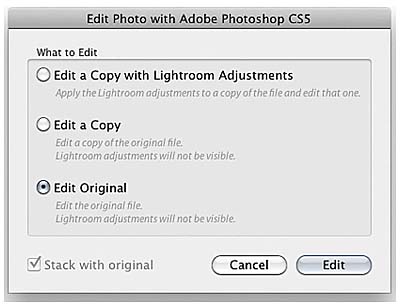
Figure 7.2 If you open a nonraw image using the main Edit in Photoshop command ( [Mac] or
[Mac] or  [PC]), the Edit Photo options dialog will appear and the default “Edit Original” option will be selected.
[PC]), the Edit Photo options dialog will appear and the default “Edit Original” option will be selected.
Edit in additional external editing program
The other alternative is to open your images using the additional external editing program option, which can also be accessed via the Photo  Edit in menu (
Edit in menu ( [Mac] or
[Mac] or  [PC]). In the Additional External Editor section of the External Editing preferences (Figure 7.1) you can specify the default settings to use when editing photos in an alternative external editing application. The difference between this and “Edit in Photoshop” is that when you choose the External Editor command (
[PC]). In the Additional External Editor section of the External Editing preferences (Figure 7.1) you can specify the default settings to use when editing photos in an alternative external editing application. The difference between this and “Edit in Photoshop” is that when you choose the External Editor command ( [Mac] or
[Mac] or  [PC]), an edit copy of the master is always added to the Lightroom catalog.
[PC]), an edit copy of the master is always added to the Lightroom catalog.
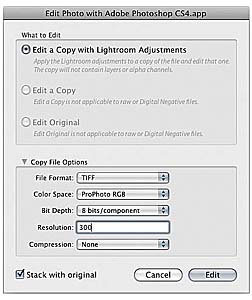
Figure 7.3 If you open a raw image using the additional external editor option ( [Mac] or
[Mac] or  [PC]), the only available option is to edit a pixel-rendered copy using Lightroom adjustment. But you do have the option to override the file format and other settings in the External Editor preferences.
[PC]), the only available option is to edit a pixel-rendered copy using Lightroom adjustment. But you do have the option to override the file format and other settings in the External Editor preferences.
The Lightroom External Editing preferences will let you customize the pixel image editing settings for any additional external, pixel editing program, such as Adobe Photoshop Elements™ or Corel PaintShop Pro™. Or, you could choose to open in the same version of Photoshop, but with different default file format options. For example, you might want to use the settings shown in Figure 7.1 to create new edit versions that are saved using the TIFF file format but with different compression settings. Whichever program you select here, this then becomes available as a menu option when you go to the Photo ➯ Edit in Photoshop menu, just below the main Edit in Photoshop command (Figure 7.4).
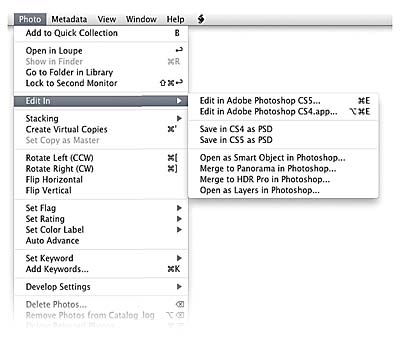
Figure 7.4 Whichever program is selected as the Additional External Editor will appear listed below the main Edit in Photoshop command in the Photo  Edit in Photoshop menu and can be invoked using the
Edit in Photoshop menu and can be invoked using the  (Mac) or
(Mac) or  (PC) keyboard shortcut. You can also select saved external editor presets.
(PC) keyboard shortcut. You can also select saved external editor presets.
The main difference when opening a raw image via the “Edit in external editor” option is that it uses the Lightroom raw processing engine to render a pixel image copy of the catalog image. The new copy image is added to the catalog before opening it up in the selected program and you also have the opportunity to override the file format and other settings before the image is opened. So, when you use  (Mac) or
(Mac) or  (PC) to open a raw image, instead of the photo opening directly, you will always see the dialog shown in Figure 7.3. On the face of it the only available option here is “Edit a Copy with Lightroom Adjustments.” If you click on the disclosure triangle at the bottom of the dialog you can expand the Copy File Options and use these to override the file format, RGB space, and bit depth options set in the External Editing preferences. Note, if you have selected a program other than Photoshop or Photoshop Elements as the external editor, the PSD file format option won’t be available. You will also notice the “Stack with original” option at the bottom. This allows you to decide whether you want to automatically stack the newly created edit copy versions with the original catalog image, which is something you can’t do when using the main Edit in Photoshop command. You can also turn this on or off in the External Editor preferences.
(PC) to open a raw image, instead of the photo opening directly, you will always see the dialog shown in Figure 7.3. On the face of it the only available option here is “Edit a Copy with Lightroom Adjustments.” If you click on the disclosure triangle at the bottom of the dialog you can expand the Copy File Options and use these to override the file format, RGB space, and bit depth options set in the External Editing preferences. Note, if you have selected a program other than Photoshop or Photoshop Elements as the external editor, the PSD file format option won’t be available. You will also notice the “Stack with original” option at the bottom. This allows you to decide whether you want to automatically stack the newly created edit copy versions with the original catalog image, which is something you can’t do when using the main Edit in Photoshop command. You can also turn this on or off in the External Editor preferences.
Opening non-raw images
When you open a pixel image such as a TIFF, PSD, or JPEG, the default option is “Edit Original” (Figure 7.5). This is almost exactly the same as choosing “Edit original” in the main Edit Photo in Adobe Photoshop dialog (Figure 7.2). The only difference being that the External Editing options allow you to open your catalog photos using a program other than the latest version of Photoshop on your computer (which you can determine in the External Editing preferences). Likewise, if you choose the “Edit a Copy with Lightroom Adjustments” or the “Edit a Copy” option this also allows you to edit a copy version in an alternative external editing program.
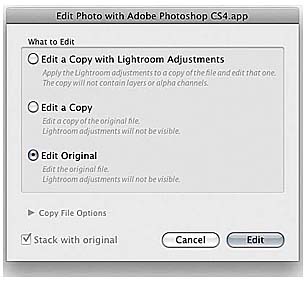
Figure 7.5 IIf you open a non-raw image using the additional external editor option ( [Mac] or
[Mac] or  [PC]), all the edit options are available.
[PC]), all the edit options are available.
Creating additional external editor presets
In the External Editor preferences (Figure 7.1) you can save the Additional External Editor settings as presets (Figure 7.6). Once saved, these will appear as Photo ➯ Edit in submenu options (Figure 7.4). For example, you might find it useful to have saved export settings for both TIFF and PSD formats for different pixel editing programs.
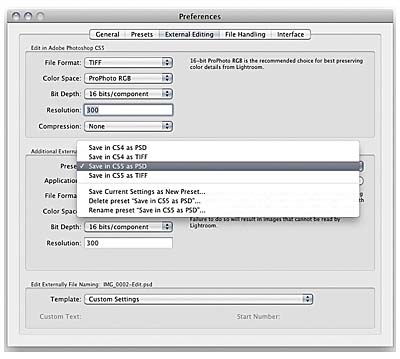
Figure 7.6 The Additional External Editor presets menu.
External editing file naming options
At the bottom of the External Editing preferences dialog (Figure 7.1) is the “Edit Externally File Naming” section. Lightroom normally appends –Edit to each externally edited image filename, and as you created further edit copies, Lightroom increments the numbering: –Edit1, –Edit2, and so on. It is possible though to customize the file naming. For example, you could create a custom template that always adds a date stamp after the original filename (such as is shown in Figure 7.7) and apply this renaming scheme whenever you create an edit copy version from a master file.
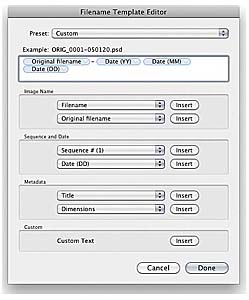
Figure 7.7 The Filename Template Editor.
The file format and other file settings options
The file format options in the External Editing preferences (as well as in the Figure 7.3 Edit Photo dialog) allow you to establish the default file format, RGB space, and bit depth to use when opening an image. There are two edit copy file format options: TIFF and PSD. The TIFF file format is the most versatile of the two, since the TIFF format always stores a flattened composite image and is able to save all Photoshop features such as layers, paths, and layer effects. The PSD file format is sometimes better because the time it takes to save and open a file can be quicker. But if you want Lightroom to recognize layered PSD files you must make sure the Maximize PSD compatibility option is switched on first in the Photoshop File Handling Preferences. The Color Space options are limited to ProPhoto RGB, Adobe RGB, and sRGB. The Bit Depth can be set to “16 bits/component,” which preserves the most tonal information (as much as Lightroom is able to). The 8 bits component reduces the number of levels to 256 levels per color channel and allows you to create smaller edit files that are more compatible with applications other than Photoshop. These settings are crucial for opening raw images, but with non-raw files it is important to realize that the file settings options will be limited by the file properties of the master images. For example, if the source image is say, an 8-bit, sRGB JPEG, you aren’t going to gain anything by exporting it as a 16-bit ProPhoto RGB TIFF.
Note that when you open a raw image using the main Edit in Photoshop command, it opens using the color space, bit depth, and resolution settings that have been configured in the External Editing preferences. As I mentioned earlier, the file format choice only comes into play when you actually choose to save the image from Photoshop. The default behavior is to save the file to the same folder as the original master, using the file settings options specified in the External Editing preferences and add the image to the catalog. If you choose Save As... from the Photoshop File menu you can then override the default file format and save destination.
Camera Raw compatibility
When opening raw images there is a further issue to take into account when choosing between the main “Edit in Photoshop” and “Edit in external editor” commands. The main “Edit in Photoshop” command opens raw images directly using Camera Raw in Photoshop to read the Lightroom settings and carry out the raw conversion. What happens next will therefore depend on which Develop adjustments have been used to edit the photo and whether these are specific to Lightroom 4 or not, and which version of Photoshop and Camera Raw you are using. If you are using Photoshop CS5 with the most recent Camera Raw 6.7 update, most Lightroom 4 Develop settings will be read, although the 6.7 update won’t add full Lightroom 4 functionality (for that, you will most likely have to wait for the next full version of Photoshop). If you use Photoshop CS5 with an older version of Camera Raw you will see the warning dialog shown in Figure 7.8. Here you can choose “Open Anyway” (maybe all the applied Develop settings can be read by an earlier version of Camera Raw). Or, you can choose “Render using Lightroom,” where Lightroom will render an edit copy of the original and automatically add this to the Lightroom catalog. Essentially, you gain the ability to open a Lightroom 4 image in Photoshop CS5 using older versions of Camera Raw but lose the option to open the raw image in Photoshop and choose whether to save or not. Raw images may also open fine via Photoshop CS4, providing you have installed the most recent CS4 Camera Raw update and haven’t updated to Process 2012 (which Camera Raw for CS4 will be unaware of). Where a raw image does have “unknown” settings you will again see the warning dialog shown in Figure 7.8.

Figure 7.8 If you don’t have the latest version of Camera Raw for Photoshop CS5, you will see this dialog when choosing the main “Edit in Photoshop” command from a raw image.
The main thing to understand here when choosing an “Edit in Photoshop” command to open a raw image is that Lightroom always wants to open that image using the Camera Raw plug-in contained in Photoshop itself, which allows an opened image to remain in an unsaved state until you decide to save it. Where there may be compatibility problems (because the version of Camera Raw for the version of Photoshop you are using is unable to interpret the Lightroom settings), you can always choose the “Render Using Lightroom” option to override the default Lightroom behavior. The downside is this always creates a rendered copy first and you won’t have the option to close without saving.
How to use the external editing options
- Here I selected a master raw
image from the filmstrip
and used the “Edit in
external editor” command
(
 [Mac]
or
[Mac]
or  [PC])
to create an edit copy that
could be edited in Photoshop.
Notice that I checked the “Stack
with original” option.
This grouped the edited version
in a stack with the original
master.
[PC])
to create an edit copy that
could be edited in Photoshop.
Notice that I checked the “Stack
with original” option.
This grouped the edited version
in a stack with the original
master. - The edit copy of the original photograph opened directly in Photoshop where I could retouch the photo. When done, I chose File ➯ Save and closed the image.
- Back in Lightroom you can see how the modifications made in Photoshop to the edit copy were reflected in the filmstrip and main preview. The Edit Copy photo had now been added to the same folder as the original and was highlighted in the filmstrip, where you can see the selected image identified as number 2 of 2 images in the stack.
- If I wanted to re-edit the
image in Photoshop, I could
use either
 (Mac)/
(Mac)/  (PC)
or
(PC)
or  (Mac)/
(Mac)/ (PC)
to show the Edit Photo dialog,
where I would choose Edit
Original.
(PC)
to show the Edit Photo dialog,
where I would choose Edit
Original.
